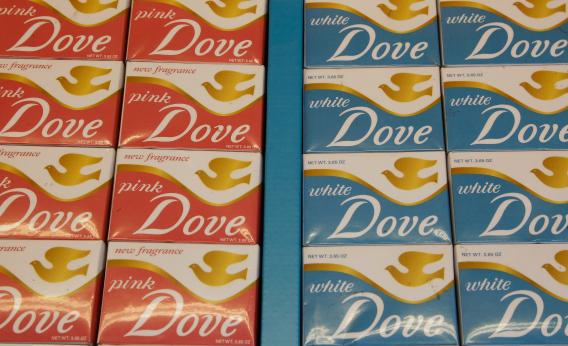The flagship video for the Dove ad campaign “Real Beauty Sketches” has generated over seven million views since its debut less than a week ago. The video documents an experiment Dove conducted where several women, each sitting alone, describe themselves to a forensic artist behind a curtain as he sketches them. Then, phase two, strangers whom the women had met briefly earlier also describe them to the artist. Afterward each woman is shown the two illustrations side by side— the one based on her description and the one based on the description by the stranger. The women are shocked, some tearing up, as they look at the two pictures. In all of the pairings the sketches based on the strangers’ descriptions are far more attractive. Tagline: “You are more beautiful than you think.”
The immediate press for the campaign has been glowing. A HuffPo piece wrote “despite the obvious commercial intentions behind this campaign, the message rings true.” Babble’s lead called it “powerful and poignant.”
They’re both right. And yet the point of the campaign is neutered at best, and more likely distorted by the fact that in the experiment all of the women are fashionable and reasonably attractive. What happens in the experiment if they were to use “regular” women who are poor, not stylish, unattractive? While the campaign’s point that many women have uncharitable perceptions of their looks is well-taken, Dove’s casting choice is disingenuous and ultimately harmful. This ad is the latest in Dove’s long-running campaign of using a faux representation of “real” women.
The charade of keepin’ it real is particularly egregious in this latest spot. Melinda, the slim brunette in skinny jeans with Zooey Deschanel bangs, and Olivia, with the piercing blue eyes and long golden hair, are two of the younger standouts. The more middle aged women all have a sophisticated urbane look about them, with contemporary hairstyles and makeup so tasteful it looks as if a Bobbi Brown stylist applied it (perhaps one did).
Watching the ad, I kept picturing all of the women I see on the subway, at highway rest stops, in suburban malls. Yes, some of them look like the women in the ad, but most of them don’t. Imperfect dye jobs, baggy jeans, acne scars, and faces that could not be termed “thin so you could see her cheekbones,” as Florence, one of the subjects in the ad, was described by the stranger. What are they to make of the ad? In a way this ad campaign is even worse for them than conventional ads because it has the pretense of representing them, and yet they still must notice they fall far short of “real” (real being defined in this context as average). At least every women expects to not look like the models and actresses in standard beauty advertising.
A separate, yet also important manipulation in the ad is the deliberate misuse of the word “beautiful.” When they say, “You are more beautiful than you think,” what they really mean is, “You are more attractive than you think.” By distorting the definition of beautiful, they devalue the word’s real meaning by perpetuating both the notion that everyone is beautiful, and even that beauty, as the most exceptional form of attractiveness, is something we all should strive for to begin with.
While the spot is moving, and has an ostensibly valuable message, in the end, it can only let real women down. In fact, its “poignancy” is what makes it so dangerous. Our emotional response clouds our ability to see it for what it really is—another cynical ad campaign.
